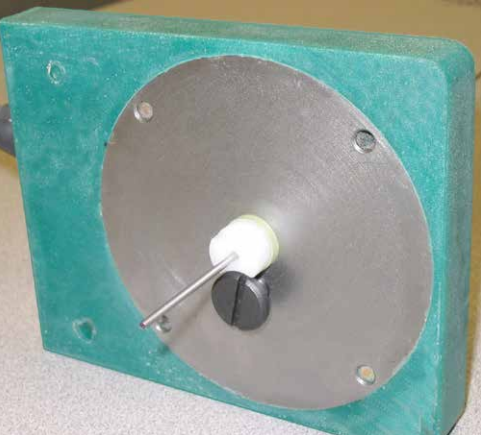DUCTILE IRON SOCIETY 2017 FALL MEETING, OCTOBER 2017
Traditional Ultrasonic Testing
• Sound travels into the part, reflecting from a defect – “Flaw Detection”
• Reflector size is also determined by signal amplitude – “Flaw Sizing”
• Sound travels into the part and returns after a measurable length of time – “Thickness Gaging”
• All instrument calibrations are based on these simple principles:
Distance = Time × Velocity
D = T × V
T = V / D
V = Distance / Time
Sound Velocity
• Ultrasonic sound velocity varies in different materials.
• Every material has a measurable velocity:
- Mild Steel = 2.3 inches/sec × 10⁻⁵ (MS) Microseconds
- Water = 0.584 inches/sec × 10⁻⁵
- Gold = 1.3 inches/sec × 10⁻⁵
- Lead = 0.87 inches/sec × 10⁻⁵
- Iron = 2.3 inches/sec × 10⁻⁵
- Iron (Cast) = 1.8 inches/sec × 10⁻⁵
Velocity = Distance / Time
Elastic Modulus
• Velocity is directly related to:
- Modulus of Elasticity
- Young’s Modulus
- E Modulus
• E Modulus is related to Ductility/Nodularity.
• Ductility is related to suitability for purpose: - Brittle cast iron is not suitable for some structural applications.
- Example: Safety-related auto parts (brake and steering components).
• Cast parts can be sorted with ultrasonics for suitability for these uses.
Cast Iron - Grey Iron
• Depending on the graphite flake content of the cast iron, the ultrasonic velocity of cast iron varies.
• When nodular, the flakes minimally affect the grain boundaries in the iron, making it less brittle.
• When it is less brittle, it is also ultrasonically faster than when it is brittle.
• Related to:
- Strength
- Machinability
- Ductility
Specifications
• Auto Components
- Automotive companies can specify an ultrasonic test for their safety-related components.
• The ultrasonic method is accepted for many test requirements, and when implemented on the production line, 100% of the parts are inspected without generating scrap from destructive testing.
• When incorporated into the production line, “Integrity” tests can also be included in multiple-channel ultrasonic systems for: - Flaw Detection
- Thickness Measurements


